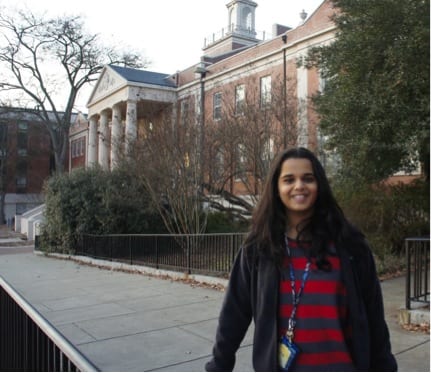The widespread belief that “humans evolved from apes†is misleading, but almost correct. An extensive study of fossils over the last 50 years has found that humans and apes had a common ancestor and the two lineages split apart about 3 to 13 million years ago.
Australopithecus afarensis is believed to be the first species in the human lineage after diverging from this common ancestor, and is the most human-like before those in the Homo genus. Several other steps leading up to the modern human, Homo sapiens, have been found, but ambiguity still exists over which species evolved from which.
We are still missing many pieces in the puzzle when it comes to human evolution. And sometimes when a new piece comes along, we must rethink all that we thought we knew. One such puzzle piece is the recently discovered Homo naledi.
In the summer of 2015, six young female scientists crawled into the depths of the Rising Star cave in South Africa to find thousands of bones belonging to a new species of human ancestors, now named H. naledi. There is much confusion over their exact placement in time, because while some of their attributes (dental structure, for example) are closer to the Homo genus, certain things like curved fingers and a flared pelvis also show ape-like character. Without dating the fossils, it is impossible to place Homo naledi in the chart of human evolution.
Another mystery to this puzzle is: how did 1,500 bone fragments end up at the bottom of a deep cavern? Strangely, this cave is filled with more than a thousand intact bones that belong just to H. naledi and no other species of animal. There are also no signs of any artifacts that could indicate that H. naledi lived in the cave – the only logical explanation is that the bodies were intentionally placed there. Could this indicate purposeful disposal of dead bodies by our ancestors?
Humans have been intentionally burying their dead for a very long time. It is widely believed that Neanderthals were the first ones to systematically perform burials of their dead about 50,000 years ago. The practice is thought to be ritualistic based on the fact that tools, weapons and other items like the deceased's belongings were found with the remains.
However, some anthropologists are skeptical of this theory and believe that there are different ways in which the fossils could have ended up in the positions they were found in. One example is that a landslide could have buried a person alive, and the items found with the remains of the body could be the possessions they had at the time.
If H. naledi really buried their dead, it would also bring into question the assumptions we have made about the intelligence of other ancestor species based on their brain sizes. The brain size of H. naledi are less than half of the brain capacity of modern humans and Neanderthals.
Another similar dilemma is found in the case of the Flores man (Homo floresiensis). These human ancestors had smaller brains than H. naledi, but had the ability to make complicated tools. Certain anthropologists also suspect that bones of H. naledi and H. floresiensis could represent relic populations that might have been isolated in South Africa and Indonesia respectively, thus evolving their own unique traits.
Human evolution is more like a tree than a line; it diverges and converges at various places, and it will take a long time to figure out what happened at different points in time. Furthermore, when new ancestor species like H. naledi are found, we have to add and subtract information in order to gain a better understanding of the bigger picture. As we understand more about the H. naledi in the future, hopefully we can understand more about the development of human lineage.
About the Author
 Sunishka “Sonny†Thakur is an undergraduate at the University of Georgia majoring in Genetics, currently just trying to make the most of her freshman year. She loves to read, dance, work with student organizations like First Book and World Ambassadors, and gets very excited about science. More from Sunishka Thakur. Sunishka “Sonny†Thakur is an undergraduate at the University of Georgia majoring in Genetics, currently just trying to make the most of her freshman year. She loves to read, dance, work with student organizations like First Book and World Ambassadors, and gets very excited about science. More from Sunishka Thakur. |
About the Author
-
athenssciencecafehttps://athensscienceobserver.com/author/athenssciencecafe/April 17, 2020
-
athenssciencecafehttps://athensscienceobserver.com/author/athenssciencecafe/April 12, 2020
-
athenssciencecafehttps://athensscienceobserver.com/author/athenssciencecafe/April 3, 2020
-
athenssciencecafehttps://athensscienceobserver.com/author/athenssciencecafe/March 30, 2020







